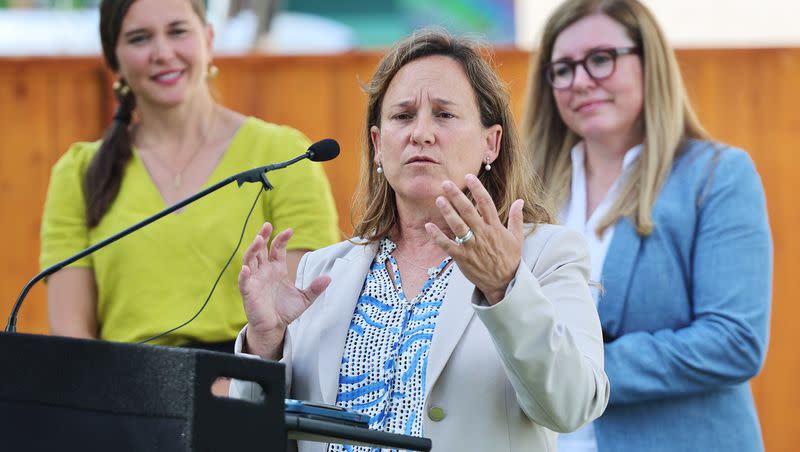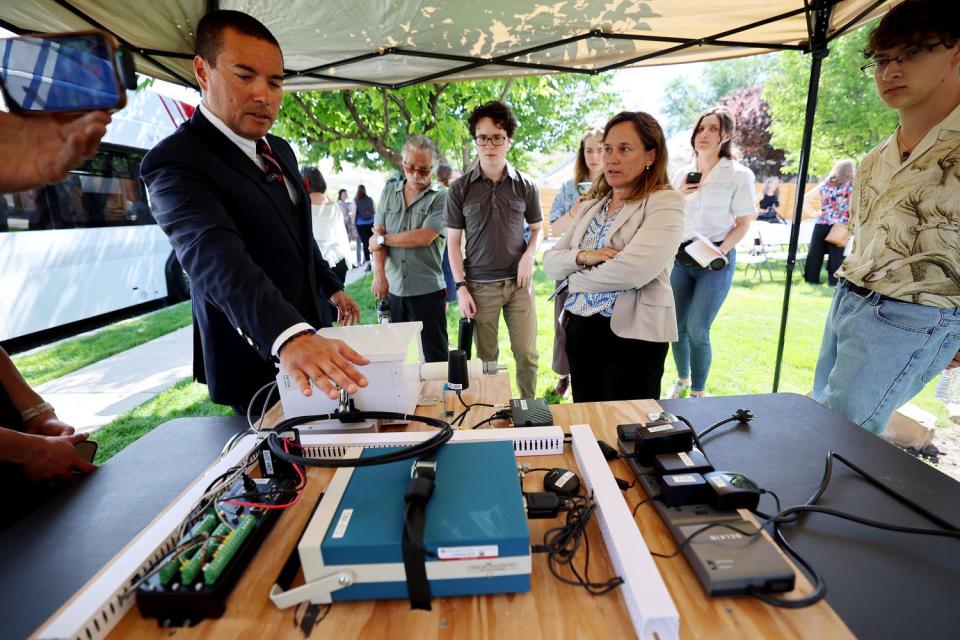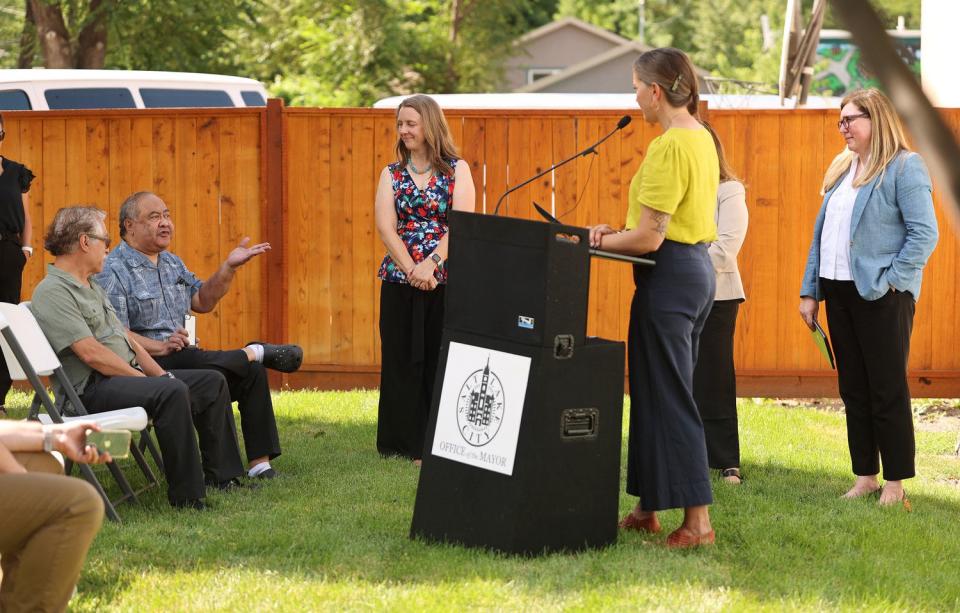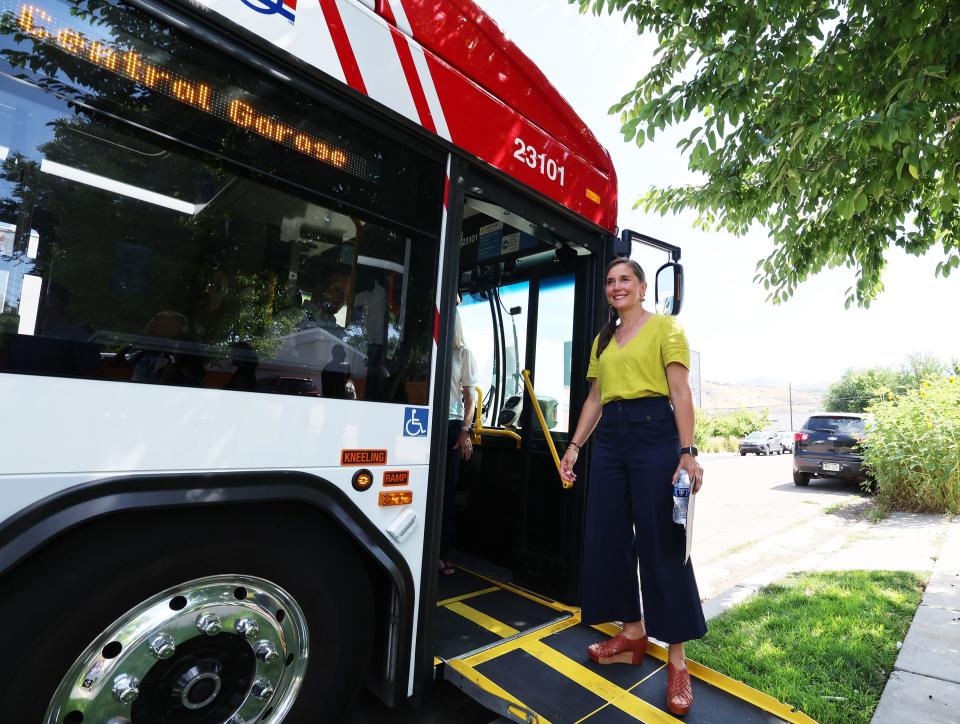Salt Lake City begins to piece together plans for 'transformative' EPA funding

Federal environmental officials say Salt Lake and Tooele counties are on the verge of receiving “transformative” grant money that will help reduce pollution and address climate issues within both counties; however, local officials are still piecing together how they plan to tap into billions of dollars set aside for projects that aim to reduce air and water pollution.
The Environmental Protection Agency awarded Salt Lake City $1 million through its Climate Pollution Reduction Act grant program in May, making the Salt Lake City metropolitan area one of the first among more than 70 areas in the country. Salt Lake City's metro area includes communities all over Salt Lake and Tooele counties, according to the EPA.
Members of the Salt Lake City Council are still going through a process to formally receive the money, Salt Lake City Mayor Erin Mendenhall said Tuesday. The city plans to work over the next few years to make a resident advisory committee that will determine what types of projects they want to see in the future.
Future projects may include improvements to drinking water and wastewater treatment, more community air monitoring or pollution prevention. It also may result in more electric buses or solar electricity projects.
The city is eligible to apply for a piece of $4.6 billion set aside to implement the projects and initiatives they highlight. That's on top of other "billions of dollars" that Congress approved through the Bipartisan Infrastructure Law and Inflation Reduction Act, Mendenhall said.
“There are many billions of dollars in grant funds out there across these federal agencies, and we will go after as many as could apply to the strategies that we identify,” she said. “By 2025, we will have applied for the money to implement the ideas that are about to come out of this community process.”
EPA's new funding possibilities
KC Becker, EPA's regional administrator who oversees areas in Utah, says all the new funding from the last few years marks a “transformational time” for the EPA, as it seeks to distribute the money to communities all over the county for “long overdue and pressing needs.”
In all, she said there's about $100 billion available for a wide array of projects that tackle pollution and climate change. The Climate Pollution Reduction grant program specifically targets strategies that reduce pollution while helping disadvantaged communities.
These plans include:
• Greenhouse gas emission inventories.
• Emissions projections and reduction targets.
• Economic, health and social benefits.
• Workforce needs to support decarbonization and a transformation to a clean energy economy.
• Plans on how to tap into other sources of federal funding, such as the Bipartisan Infrastructure Law and Inflation Reduction Act.
• Future government budget and staffing needs.
“It doesn’t sound exciting, but it’s really transformative amounts of money,” Becker said, explaining that $100 billion is about 10 times the typical annual EPA budget. “And community groups get to decide for themselves what the biggest need is and help get that out into the community.”
Utah Department of Environmental Quality executive director Kim Shelley said the state is excited about these funding opportunities because the region's rapid growth is causing “new challenges when it comes to air quality. There are more vehicle emissions because of it, as well as new concerns about dust coming from the dried Great Salt Lake.”
The agency is already planning to roll out about 40 air quality sensors to better understand pollution in Magna, West Valley and Salt Lake City's west side.

These types of projects may expand as a result of new EPA funding. University of Utah Department of Atmospheric Sciences assistant professor Daniel Mendoza attended the event to demonstrate how an air monitoring system works on top of electric buses. He is part of a group using these monitors on electric buses to track air quality trends within Salt Lake County.
The project is still in its early stages, so preliminary results are still unavailable; however, he hopes more monitoring can pinpoint new trends so problem areas can be cleaned up in the future.
“That is the goal,” he said. “We're hoping that within the next few months, we'll have enough data ... that we'll be able to have a much better picture.”
Help for the west side?
The EPA program has the potential to help out Salt Lake City's west side, Mendenhall says. The city's west side neighborhoods have a disproportionate amount of pollution in the area, as a result of manufacturing, freeways, railroads and the Salt Lake City International Airport all located within the area.
She pointed to metrics that show the area has higher asthma rates and lower life expectancy rates than the east side. It's also one of the worst areas in the state for particulate matter and ozone pollution, though east-side areas also struggle with ozone pollution.
“I can go on from air (toxins), cancer risk, respiratory hazard index, proximity to high traffic volumes. This is real data that we know from the census tracts,” the mayor said. “Not only will we be tracking, but we should be expecting that these implementations, these projects — that we're going to develop with the community — will improve these numbers.”
But some residents remain wary about the new funding.

Alama Uluave, who lives in Salt Lake City's Poplar Grove neighborhood, asked what types of steps were being done to assure that programs address what they're intended to, prefacing his question to federal, state and local officials with concerns he said the neighborhood faces on a regular basis.
“We don't have any trust — our trust level is pretty low,” he said. “We trust but we want it verified. ... We're tired, on the west side, of having to fight for everything we get. We have to fight for air; we have to fight for water; we have to fight for our land; we have to fight for our home, (and) education. And then when we fight for it and stand up for our rights, what do they do? They punish us. They make us the bad guy for speaking up.”
Both Mendenhall and Shelley said they understand the frustration, asserting that the ongoing tracking of pollution and public health metrics will help determine if projects are successful or not.
They also believe that having resident advisory committees will help those who are impacted the most by the problem have a greater say in how the money is used.
“We are data-driven,” Shelley said. “The data doesn't lie, right? It tells a very compelling story, but there's also the human element, as well. That's where communities will come in and help guide this funding.”


